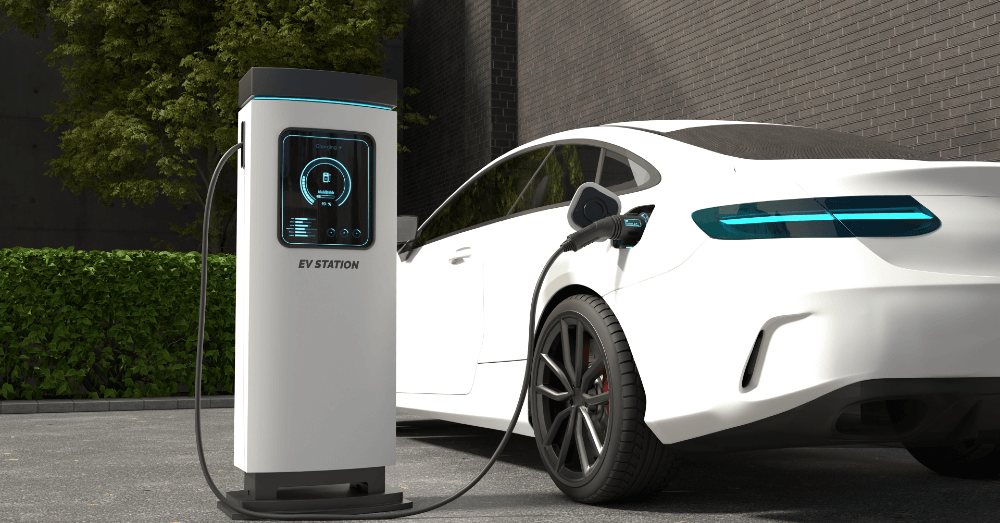Unlike hydrogen or other alternative fuels, the world has embraced electric vehicles, which signals they might be the future of transportation.
There’s an argument for some other alternative fuel for long-haul trucks that need to cross thousands of miles delivering goods, but for the rest of the world, electric vehicles should work just fine as an alternative to gasoline and diesel. EV adoption is on the rise, albeit more so in other countries than in the United States, but EVs are still on the rise here.
Let’s look at some ways EVs are right for the future and ways they aren’t.
Future Positive: Less Maintenance and Fewer Repairs
EVs have far fewer moving parts and replaceable fluids than internal combustion vehicles, which means EVs shouldn’t require as much maintenance to operate properly. Even some of the consumable parts, such as the brake pads, should last longer in EVs compared to ICE models because of regenerative braking, which uses engine braking to send energy back to the batteries and extend the driving range of the EV. All EV battery packs are required to be protected by an 8-year/100,000-mile warranty, which ensures an EV should provide many years of driving excellence.
Future Negative: Limited Driving Range
Electric vehicles might not be catching on as fast as they could be in the United States because of the limited driving range. Some drivers travel several hundred miles in a day and thousands of miles each week. They don’t have time for an EV that quotes a 300-mile driving range, which is actually only 210 usable miles, and also requires 30 minutes to charge after those 210 miles of range has been used up.
Future Positive: No Tailpipe Emissions
A major factor in pushing EVs forward is the lack of tailpipe emissions. They don’t inject greenhouse gasses into the environment, which means air pollution declines in areas that have more EVs than ICE vehicles. If you either utilize solar power to create your electric energy or live in an area where that energy is produced using wind or hydroelectric power, your carbon footprint is smaller than in areas where electricity is produced by burning coal.
Future Negative: Battery Production Has a Terrible Environmental Impact
The materials used to create batteries for electric vehicles come from countries with horrible track records in terms of ecological protection and human rights. This means these countries might not have laws to protect children or offer any quality of life to those working in the mines to gather the metals for EV batteries. The Inflation Reduction Act helps alleviate this problem, but only to a point. The materials are still mostly rare earth metals, which have a limited supply.
Future Positive: Energy Efficiency
The energy produced by an electric system or gas-powered motor can be measured in efficiency base on how much of that energy is actually used during a drive. In EVs, 87% to 91% o the energy produced by the electric system is used while gas-powered cars only utilized 16% to 25% of the energy. The rest of the energy is wasted in the form of heat energy in gas-powered cars, but EVs recapture energy from braking and put it back into the batteries, making them even more energy efficient.
Future Negative: Lack of Reliable Fast-Chargers
Electric vehicles can be quickly adopted by drivers because they can be charged at home. Using an energy source that is proven safe and available in every home makes it easy to adopt this type of driving. Unfortunately, when drives take EVs on road trips in the hopes of getting from point A to point B as quickly as they would in a gas-powered vehicle, it’s unlikely that will take place. Eventually, there will be more public fast-chargers, but for now, there aren’t enough to expect all drivers to use EVs.
Future Positive: Lower Ownership Costs
Currently, EVs cost more than gas-powered vehicles, and EVs cost more to insure. Eventually, these costs will likely level off, but the cost of fueling and maintaining an EV will remain lower than that of ICE vehicles. Electricity is much cheaper than gasoline, and drivers who charge their EVs at home will spend much less than those who utilize public fast-chargers most of the time. Some automakers are exploring ways to have some EV energy sent to the power grid, which would mean earning some money back from a fully-charged EV battery.
Are electric vehicles the future of driving? It seems they should be, but there are still many hurdles to overcome before these vehicles will completely replace gas and diesel-powered vehicles.


